Climbing Mount Kilimanjaro is an extraordinary adventure. Located in Tanzania, East Africa, Kilimanjaro stands as the highest peak on the continent, towering at 5,895 meters (19,341 feet). This majestic mountain is not only a striking natural wonder but also one of the Seven Summits, making it a coveted destination for trekkers worldwide.
Our guide is designed to equip you with essential information for planning and undertaking your climb. From understanding the mountain’s unique features to preparing for the ascent, this guide provides everything you need for a successful trek. By using our expert advice, you’ll be well-prepared to experience the challenge and beauty of climbing Mount Kilimanjaro.
Climbing Mount Kilimanjaro is more than just reaching the summit; it’s about the journey, the preparation, and the reward of conquering this iconic peak. We are here to ensure you have the knowledge and tools to make your adventure safe, enjoyable, and unforgettable.
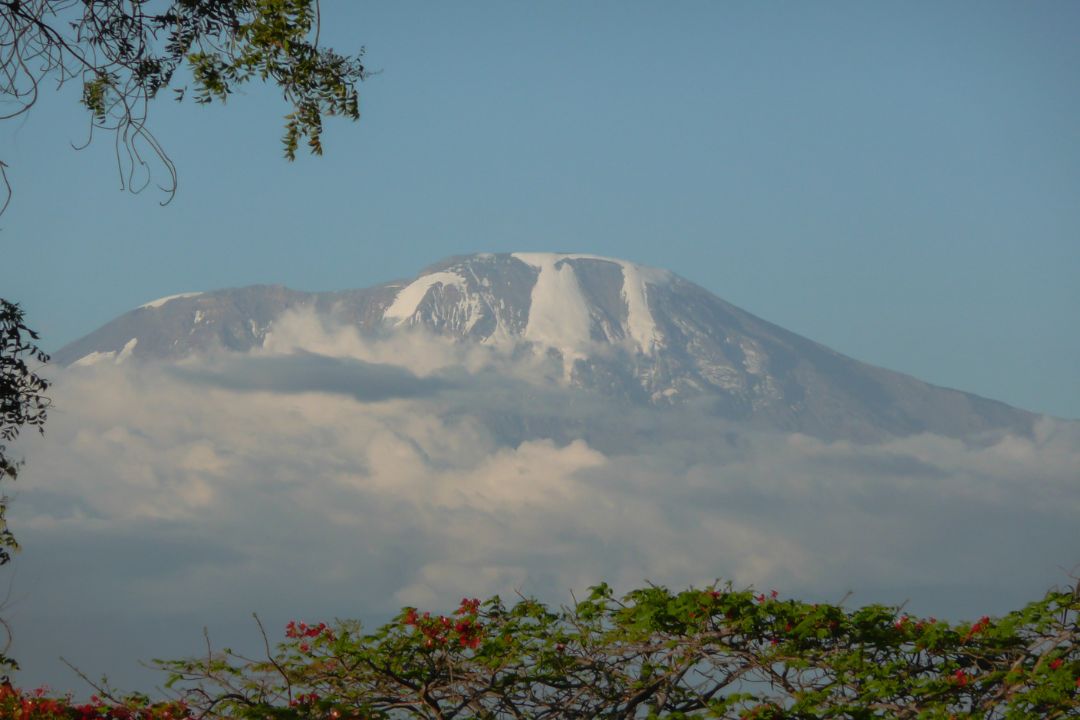
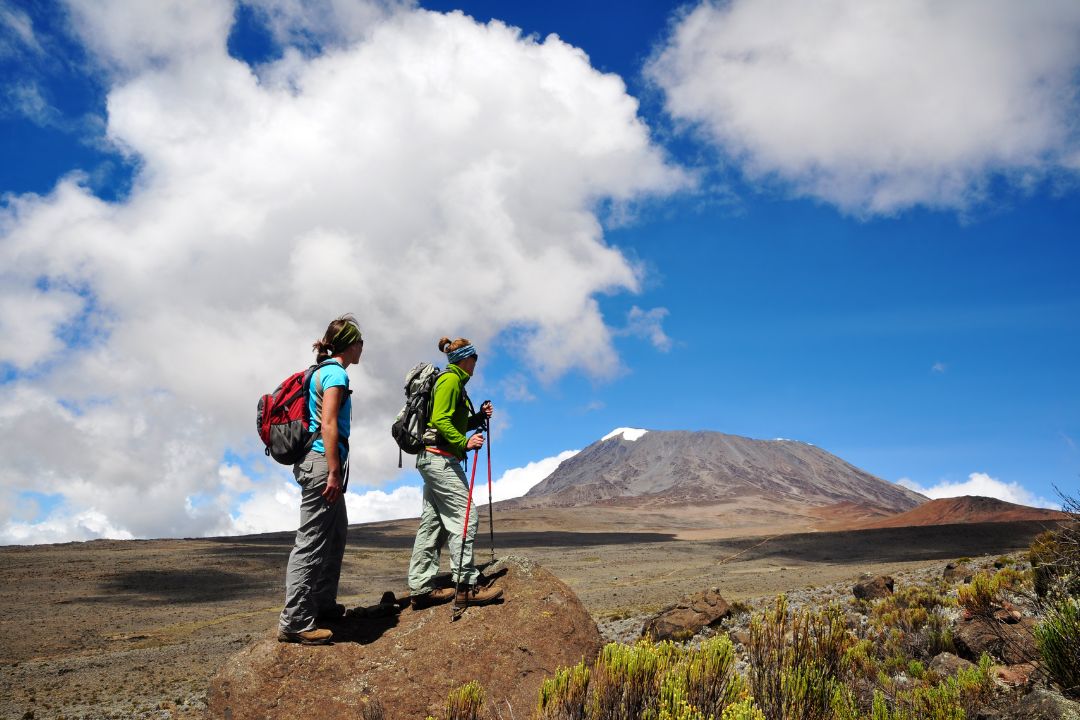
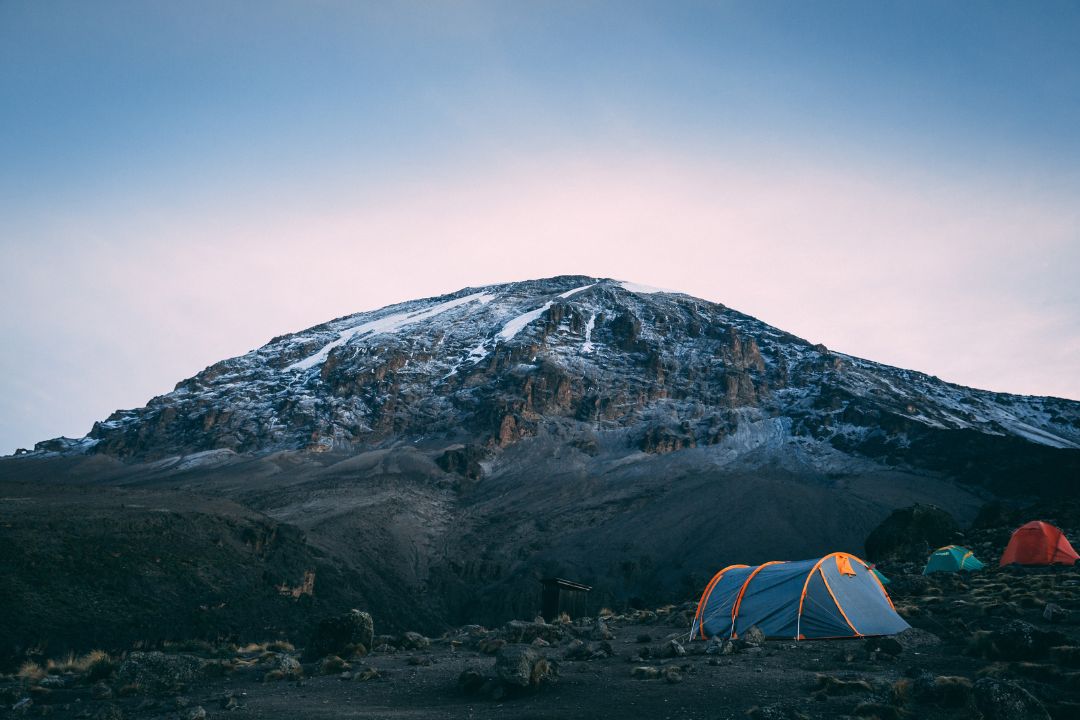
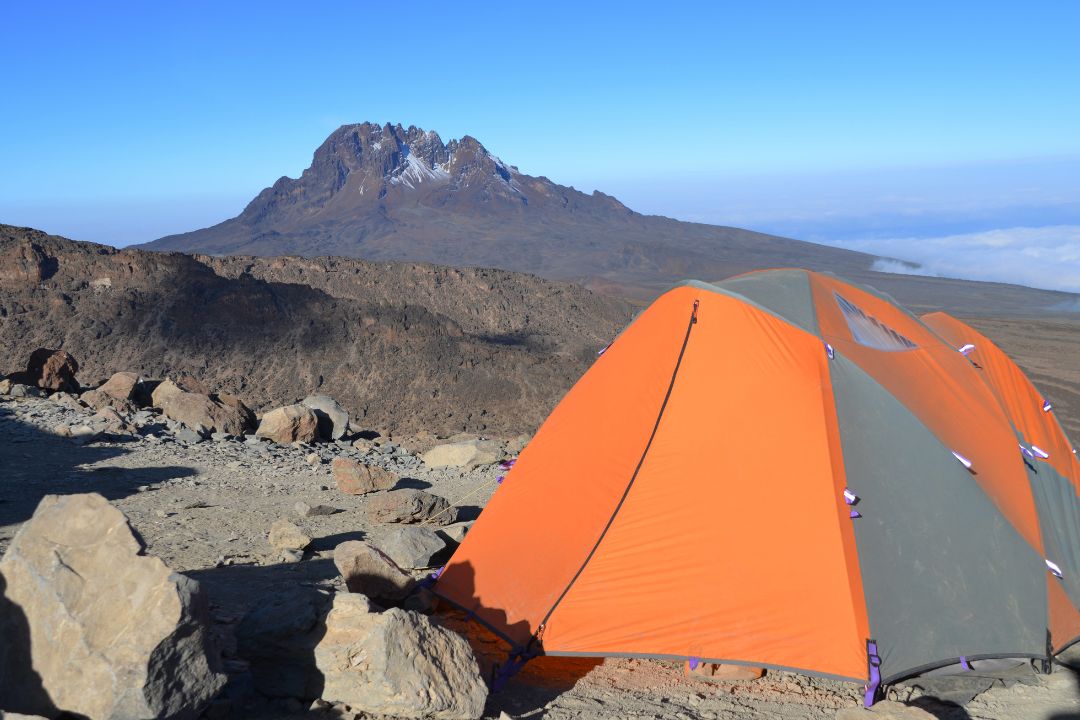

When planning your adventure, selecting the right route is crucial for a successful climb. Each path up Mount Kilimanjaro offers a unique experience, catering to different preferences and skill levels. Here’s a brief overview of the main route options:
Marangu Route (Coca-Cola Route)
The Marangu Route is often referred to as the “Coca-Cola Route” due to its popularity and relatively straightforward climb. It is the only route that offers hut accommodations throughout the trek, making it a more comfortable option. With a lower difficulty level, it’s ideal for those seeking a classic Kilimanjaro experience. However, its shorter acclimatization period means the success rate is lower compared to other routes.
Machame Route (Whiskey Route)
Known as the “Whiskey Route,” the Machame Route is favored for its scenic beauty and challenging terrain. This route offers stunning views of Kilimanjaro and a more gradual ascent profile, which helps with acclimatization. It involves camping, which adds a bit more adventure to the trek. The Machame Route is suitable for those looking for a more demanding climb with rewarding vistas.
Lemosho Route
The Lemosho Route is a longer and less crowded option, providing an excellent opportunity to enjoy Kilimanjaro’s diverse landscapes. It features a longer trek, allowing for better acclimatization and a higher success rate. The route starts from the western side of the mountain, offering unique and breathtaking views. The Lemosho Route is ideal for those looking for a more immersive experience with fewer crowds.
Rongai Route
The Rongai Route is the only route that approaches Kilimanjaro from the northern side. It is known for its relatively gentle ascent and drier conditions. This route provides a different perspective of the mountain, with views of the Kenyan plains. The Rongai Route is less traveled, which means fewer crowds and a more tranquil experience. It’s a great choice for those seeking a less busy trek with a gradual climb.
Umbwe Route
The Umbwe Route is the most challenging and direct path to the summit. It is renowned for its steep ascent and rugged terrain, making it suitable for experienced trekkers. The route offers fewer acclimatization days and requires a higher level of fitness and preparation. If you’re seeking a strenuous challenge and are well-prepared, the Umbwe Route will test your endurance and reward you with a sense of accomplishment.
Each route has its own set of advantages and challenges. Choosing the right one depends on your experience level, fitness, and preferences. Consider these factors carefully to select the route that aligns best with your climbing goals and ensure a memorable journey up Mount Kilimanjaro
When deciding on the best route for climbing Mount Kilimanjaro, consider the following factors to match your adventure goals with the right path:
Difficulty Level
Scenic Beauty
Duration and Success Rate
Accommodations (Hut vs. Camping)
Each route on Mount Kilimanjaro offers a unique experience, catering to different preferences and levels of challenge. Carefully evaluate these aspects to choose the route that best fits your climbing goals and desired experience
The best time to climb Kilimanjaro is during the dry seasons, which are from late June to October and from late December to March. These months offer more stable weather conditions and clearer views. Avoid the rainy seasons (March to May and November) as the trails can become muddy and visibility can be poor
The climb typically takes between 5 to 9 days, depending on the route you choose and your acclimatization needs. Shorter itineraries (5-6 days) are available but may have lower success rates due to less acclimatization time. Longer itineraries (7-8 days) allow for better acclimatization and higher success rates.
Success rates vary by route and duration. Generally, the success rate ranges from 40% to 65%. Routes with longer durations and better acclimatization, such as the Lemosho and Machame routes, tend to have higher success rates.
No, Kilimanjaro does not require technical climbing skills. The ascent involves trekking on well-trodden paths. However, good physical fitness and preparation are essential to handle the altitude and challenging conditions.
You should engage in cardiovascular exercises (running, hiking, cycling) and strength training, focusing on your legs and core. Hiking with a weighted backpack can help simulate the trek conditions. Aim for regular and consistent training to build endurance.
Altitude sickness can affect anyone and may cause symptoms such as headaches, nausea, dizziness, and shortness of breath. It occurs due to reduced oxygen levels at high altitudes. To mitigate this, acclimatize properly by ascending slowly, staying hydrated, and allowing for rest days.
There are no advanced medical facilities on Kilimanjaro, but most trekking companies have first aid kits and trained guides to handle common issues. For serious medical emergencies, you may need to be evacuated via stretcher or helicopter.
Costs vary based on the route, duration, and services included. On average, the cost ranges from $2,000 to $5,000. This typically covers park fees, guide and porter services, accommodation, and meals.
Yes, travel insurance is highly recommended. It should cover medical emergencies, evacuation, trip cancellations, and loss of gear. Ensure your policy specifically covers trekking at high altitudes.
While prior hiking experience is beneficial, it’s not mandatory. However, a good fitness level and proper preparation are crucial. Consider joining training hikes and consult with your trekking company about your fitness level and preparation needs.
Look for companies with good reviews, experienced guides, and proper certifications. Ensure they follow ethical practices, including fair treatment of porters and environmental conservation. Verify their safety measures and emergency protocols.
Climbing can impact the environment through littering and trail erosion. To minimize your impact, follow Leave No Trace principles, stay on designated trails, and support companies that practice environmental conservation.
Yes, you can bring a camera and other devices. However, keep in mind that charging facilities are limited on camping routes. Bring spare batteries and ensure you protect your equipment from the elements.
We use international standard equipment, and our guides are trained in first aid and equipped with personal protection gear.
Once a tour is booked, it is guaranteed to operate, even if there is only one client for the entire trip.
Our guides are trained to attend to each client's needs and adjust the program to ensure a personalized experience.
Experience the awe-inspiring beauty of Mount Kilimanjaro on a Marangu
Mount Kilimanjaro Experience a 9-day Kilimanjaro trek via the Northern
Mount Kilimanjaro Embark on an 8-day Kilimanjaro trek via the
Mount Kilimanjaro Embark on a 7-day Kilimanjaro trek via the
Mount Kilimanjaro Embark on a 7-day Kilimanjaro trek via the
Mount Kilimanjaro Embark on a 7-day Kilimanjaro trek via the
Discover the unforgettable experiences shared by our satisfied adventurers at Kilimanjaro Raven Company. From exhilarating wildlife safaris to awe-inspiring treks, our travelers consistently highlight the exceptional service, expertise, and personalized care they received during their journeys. Whether exploring Tanzania’s vast landscapes or immersing themselves in the rich culture, our guests rave about the unique adventures we offer and the memories that last a lifetime.
Our passionate team goes above and beyond to ensure every traveler enjoys a seamless, enriching experience. With glowing testimonials praising everything from our knowledgeable guides to our well-curated itineraries, it’s clear that Kilimanjaro Raven Company is dedicated to creating extraordinary trips. Our adventurers often return home with heartfelt stories of the bonds formed, the sights seen, and the adventures that will stay with them forever.
Posted onTrustindex verifies that the original source of the review is Google. feedback for Kilimamoja Raven Safari and Treks in Tanzania and Kilimamoja mountain: *5/5 Stars* "I recently had the incredible opportunity to experience the breathtaking beauty of Tanzania with Kilimamoja Raven Safari and Treks, and I must say, it was truly a journey of a lifetime! The team's expertise, professionalism, and passion for showcasing the best of Tanzania's wilderness left me in awe. From the moment we arrived, we were treated to exceptional service, comfortable accommodations, and delicious local cuisine. Our guides were knowledgeable, friendly, and went above and beyond to ensure our safety and enjoyment throughout the trek. The scenery on Kilimamoja mountain was simply stunning – the lush forests, rolling hills, and majestic vistas took my breath away. The trek was challenging, but the sense of accomplishment and the camaraderie with our group made every step worthwhile. I highly recommend Kilimamoja Raven Safari and Treks to anyone seeking an authentic and unforgettable Tanzanian adventure. Their dedication to responsible tourism and supporting local communities is truly commendable. Thank you for an unforgettable experience! I'll be back soon!"Posted onTrustindex verifies that the original source of the review is Google. *"Amazing experience, Recommend Kilimanjaro Raven to everyone"*Posted onTrustindex verifies that the original source of the review is Google. *Truly a trip of a lifetime* Absolutely incredible 7-day Lemosho route trek to the summit of Kilimanjaro with Kilimanjaro Raven! The crew was fantastic - supportive, knowledgeable, and always cheerful. The food was delicious and kept us so well fueled for the climb. The views from the top were simply unfathomable. This entire experience is a memory I will cherish forever. Thank you, Kilimanjaro Ravens!Posted onTrustindex verifies that the original source of the review is Google. It's good and awesome 👍Showing our latest reviews
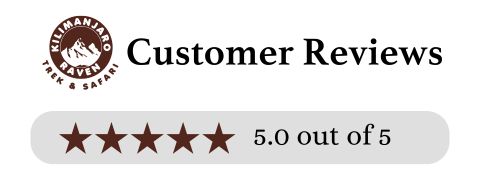
©2024 Kilimanjaro Raven Trek and Safari, All rights reserved.
Developed by Pro ICT Tanzania